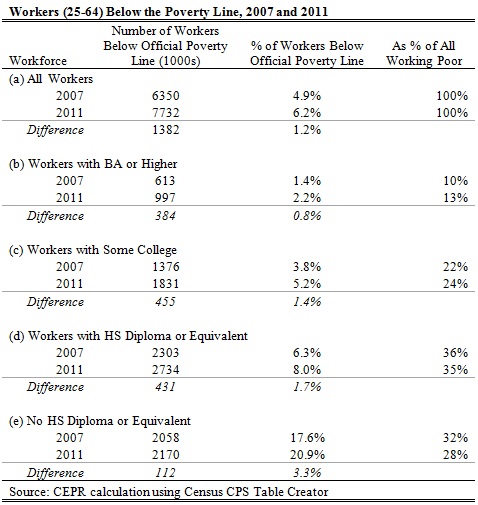February 13, 2013
In his State of the Union address, President Obama reminded us that “there are millions of Americans whose hard work and dedication have not yet been rewarded… for more than a decade, wages and incomes have barely budged… We know our economy is stronger when we reward an honest day’s work with honest wages.” The table below provides a perspective on this trend. It shows the increase between 2007 and 2011 in the number of workers (ages 25-64) below the federal poverty line, and breaks the numbers down by educational attainment.

As the table shows, there were nearly 1.4 million more workers with below-poverty incomes in 2011 than in 2007, and the worker poverty rate increased from 4.9% to 6.2%. Pundits typically frame poverty as being due to low educational attainment (when they’re not ascribing it to bad parenting practices), but the table shows how narrow-minded this is. Yes, poverty rates are higher among workers without a high school diploma, but the vast majority of workers below the poverty line (72% in 2011) have a high school diploma or higher, and more than one in three today have a BA degree or some college. As I’ve noted previously, Americans living below the poverty line today are better educated than e ver, a trend that appears to have continued over the last several years.
One caveat here is that the federal poverty line (a laughable $18,500 for family of three) hasn’t been updated for changes in mainstream living standards since the Beatles’ first American tour. As a result, the table substantially undercounts the number/percentage of American workers who don’t have sufficient incomes to make ends meet.






